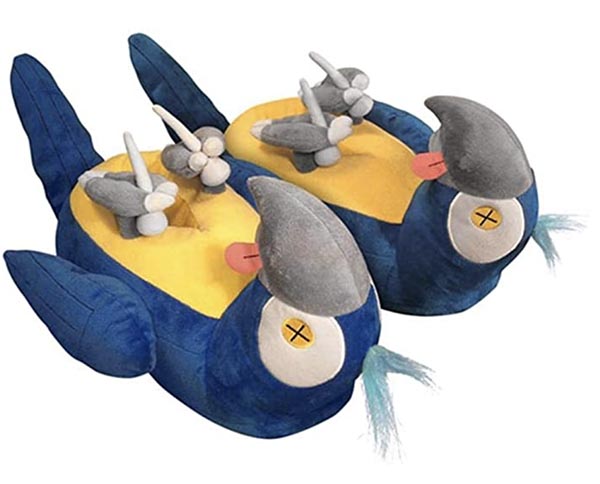Your Friday Animated Banknotes in the Sand
They've just beamed down and I gotta say, I don't like Merkel's chances. pic.twitter.com/NfGDjIRqQu
— Kevin Guilfoile (@kevinguilfoile) June 11, 2021
Barriers to Barriers
During the pandemic, retail and other locations installed plastic dividers ostensibly to protect cashiers and others from infection. Although the effectiveness of these barriers is in question, the fact remains that many if not most of these barriers will be coming down. But what to do with them, especially since they are typically made from a plastic that is not easily recyclable? Well, via Core77, the Industrial Design department at Iowa State University is addressing this very problem, and students have been proposing various ideas.
Ideas so far include turning the barriers into rechargeable [sic] laptop desks, organizational desk tools, large-scale interactive art installations – even class rings for those who didn't get to have an in-person commencement ceremony last year. Some barriers, of course, will remain standing or will be reused as is once they are no longer needed due to COVID-19 as departments such as University Museums and Parks Library have found them useful for functionality and directional assistance.
No Appetite
Kids' menu at a restaurant in Scotland. pic.twitter.com/QeIqqcGRdJ
— Hazel Katherine Larkin (@HazelKLarkin) June 13, 2021
Men with Hats
It seems hard to believe in this day and age (or maybe it doesn’t) but it wasn’t that long ago that students who did poorly—or acted up—in class were forced to sit in a special corner and out on a dunce cap—a conical hat that usually had “dunce” written on it. Atlas Obscura this week presented a history of the dunce cap—and its original intent was just the opposite: to identify people of high intelligence.
What became known as the dunce cap was invented and named after John Duns Scotus, a 13th century Scottish priest. Scotus studied theology and philosophy at Oxford, then went to teach at the University of Paris. He was eventually granted the title Doctor of Theology and became a Franciscan Master and moved to a Franciscan school in Cologne. One of his projects was a philosophical explanation for the existence of a metaphysical God. (Although, given his name, you’d have thought Scotus would have paid more attention to the Supreme Court, but that was after his time.) His theories were so complicated that Scotus was given the sobriquet “Doctor Subtilis,” or “The Subtle Doctor.” His teachings were known as “Scotism” and his followers were known as “Dunsmen.”
For some reason, Scotus was also a proponent of the use of pointy hats. It has been said that he was inspired by the use of such hats by wizards, and also conversely that it was Scotus’ love of the headgear that inspired the popular image of wizards wearing conical caps. Whichever version is true, they were both meant to denote wise men.
In fact, Scotus believed the pointed shape of the hat would, in some metaphysical way, act as a reverse funnel for knowledge, with wisdom flowing into the pointed tip, and spreading into the brain below. These hats became popular among the Dunsmen, and were soon viewed as not just as a symbol of Scotism, but as a signifier of high intelligence.
But by the 16th century, Scotus’s teachings fell out of fashion as the Renaissance superseded them, and the few remaining Dunsmen that were still around were perceived as behind the times or, indeed, as idiots. Hence, the “Duns” were thought of as “dunces” (in today’s sense) and the pointy hats symbols of stupidity.
The term “dunce” as we understand it today appeared as early as 1624, when a “dunce-table” was mentioned in the John Ford play, The Sun’s Darling, in reference to a place where children or dullards were seated apart from others. One of the earliest mentions of the dunce cap itself came more than 200 years later, when it appeared in Charles Dickens’ 1840 novel, The Old Curiosity Shop.
Unsolved Mysteries
Man Wishes Computer Could Do Thing It Already Can Do https://t.co/LTBmXERlHU pic.twitter.com/qEdARq6qrv
— The Onion (@TheOnion) June 12, 2021
In Your Dreams
They have got to be kidding. Says Boing Boing:
"Dream incubation advertising" is an experimental marketing technique that uses audio and video to shape the content of your dreams. The journal Science surveys the field and reports on a group of legit dream researchers "calling for the regulation of commercial dream manipulation," which does have some real science behind it. For example, earlier this year research from Northwestern University cognitive scientists showed that it's possible to have real-time dialogue between dreamers in the midst of REM sleep and those in the awake world.
Great—we’ll all need ad-blocking sleeping caps.
Headsets Up
coming soon: Adblock Pro for VR™?
— Internet of Shit (@internetofshit) June 17, 2021
Graphene Goes Viral
Was it a good week for graphene news? It’s always a good week for graphene news! At the University of Illinois Chicago, researchers are developing sheets of graphene that can detect COVID-19. From Graphene-Info:
According to UIC, the researchers combined sheets of graphene with an antibody designed to target the spike protein on the coronavirus. They then measured the atomic-level vibrations of these graphene sheets when exposed to COVID-positive and COVID-negative samples in artificial saliva. The sheets were also tested in the presence of other viruses, such as Middle East respiratory syndrome.
The UIC researchers found that the vibrations of the antibody-coupled graphene sheet changed when treated with a COVID-positive sample, but not when treated with a COVID-negative sample or with other coronaviruses. Vibrational changes measured with a Raman spectrometer were reportedly evident in under five minutes.
The sensors can also potentially detect variants of the virus.
LSNFT
Sir Tim Berners-Lee is selling the first web browser’s code as an NFT https://t.co/aVWpfXQmOh pic.twitter.com/UoyTTJyFOA
— The Verge (@verge) June 15, 2021
Transfer Portal
Get Richard Dean Anderson on the phone. From Laughing Squid, “Lithuanian artist Benediktas Gylys has created Portal, wondrous circular high-tech installations that allow people from Vilnius, Lithuania to say hello to those in Lublin, Poland, which is over 375 miles away.”
Portal – a bridge to the united planet aims to unite humanity by building a network of virtual bridges built in different continents and by accelerating a sense of global unity in a tiny spaceship called Earth. Let’s rise above the illusion of “us” and “them” and experience the world as it is – united and one – without borders, prejudices, and labels. Let’s transcend this sense of separation and be the pioneers of a united planet.

Mind the Gap
4.5 pound cats ARE NOT ALLOWED to take this medicine. pic.twitter.com/Tz8mQH9FVI
— (((Joshua Malina))) (@JoshMalina) June 10, 2021
Whale of Tale
Not quite the biblical story of Jonah, but still… From the Guardian:
A New England lobsterman has described the moment he realised he was trapped in the mouth of a humpback whale off the coast of Cape Cod.
“Oh my God, I’m in a whale’s mouth and he’s trying to swallow me. I thought to myself, ‘Hey, this is it. I’m finally going to die. There’s no getting out of here,’’’ Michael Packard told a local news station in Provincetown, Massachusetts.
Packard, 56, was 45ft down off Race Point in search of lobsters when the feeding whale, presumed to be a juvenile, took him. He said he “felt this huge bump and everything went dark”.
Turns out he wasn’t quite the whale’s taste.
“All of a sudden he went up to the surface and just erupted and started shaking his head. I just got thrown in the air and landed in the water,” Packard recalled. “I was free and I just floated there. I couldn’t believe … I’m here to tell it.”
We’re waiting for the follow-up story in which a whaler is almost eaten by a giant lobster.
It’s flattering to think that I’m the first person people want to come to with news that someone has been swallowed by a whale
— colin meloy (@colinmeloy) June 12, 2021
See What’s On the Slab
Deleting my dating apps because I want to meet someone the old fashioned way (their car breaks down on a stormy night and they need to use my phone)
— Tim Curry (@NotTheTimCurry) June 13, 2021
Dough!
Probably a bit late for this to take off, but this would have been a great idea a year ago. From Newsweek:
Three Japanese university students have invented a face mask made of bread that is said to block water droplets to prevent the spread of COVID-19, as well as offering a "feeling of happiness" thanks to its scent.
It is made from a bread called made from melon pan, which popular in Japan and other parts of Asia. Ironically, it doesn’t cost a lot of dough:
The Mask Pan web page, which is offering five masks for 1,800 yen (around $16.40), states: "The back of the melon bread is specially manufactured to fit the nose and mouth. Taking advantage of the soft structure peculiar to bread, it fits the nose and mouth."
Grumpy Old Men
I don't understand people who become more angry as they get older. As far as I can tell the best part of getting old is realizing how much stuff you don't actually have to give a shit about
— Daniel Radosh (@danielradosh) June 15, 2021
The Right Thing to Do
T.S. Eliot once wrote, “I have measured out my life with coffee spoons.” But if he were writing today, perhaps the aging Prufrock would instead have measured out his life with Wilford Brimleys. Via Laughing Squid, the “Brimley/Cocoon Line Calculator” lets you calculate the date on which you will be the exact the same age as actor Wilfred Brimley (50 years, 9 months, and 3 days) when the 1985 film Cocoon was released. Seems kind of arbitrary, but all right…
When 'Cocoon' reached theaters on June 21, 1985, Wilford Brimley was 18,530 days old (50 years, 9 months and 6 days).
You cross the Brimley/Cocoon Line today [June 17, 2021] if you were born on Sep 23, 1970. If you were born today then you will cross the Brimley/Cocoon line on Mar 10, 2072.
It doesn’t work very well if you have already crossed the Brimley/Cocoon Line.
Wait—he was only 50 in that movie?!
Action Sequence
this is a car chase waiting to happen pic.twitter.com/naeYSivNax
— Amanda Lehr (@am_lehr) June 12, 2021
Knirps for Moisture
As we start getting out and about again, we will have the renewed problem, on rainy days, of having to carry an umbrella around. But sometimes we don’t have a free hand. What to do? Well, via Gizmodo, why not wear it?
Thanko’s Two-way Umbrella seems like a welcome upgrade, assuming you prioritize keeping dry over style and aesthetics. Most of the time it can be used as a normal pop-open umbrella, but when the weather gets worse, the canopy features a second layer that can be expanded to create a wearable rain poncho the ends up effectively covering the entire top half of the user’s body.

Probably not the best way to be reintroduced to society.
Found in Translation
Were 3 languages necessary? I think we’d figure it out if they just used any one of these. pic.twitter.com/3DpSfbcwMX
— Patrick Clarkin, PhD (@Patrick_Clarkin) June 13, 2021
It Sucks
Well, it’s nice to see that, Roomba aside, traditional vacuum cleaner technology is proceeding apace. To wit, a new vacuum from Dyson that uses lasers. Lasers? In a vacuum cleaner? How? Well, check out the new V15 Detect. Says Gizmodo:
Two cleaning heads are included with the vac. The one designed for hard floors features a fluffy spinning brush bar, and a new button on the back activates a green laser that produces a wide spread of illumination in the cleaning head’s path. This makes tiny particles, from dust to dirt, glow like every single one of them is a bright green LED.
The effect, even in a brightly lit room with the sun pouring in, is very noticeable, and it genuinely makes it easy to see if an area has already been properly cleaned.

Indeed
ColecoVision was a game console in the 1980s that was excellent and everyone had one friend who had it and you spent as much time at their house as you could. And you were today days old when you learned Coleco stood for Connecticut Leather Company. pic.twitter.com/9lJmg3aX12
— William K. Wolfrum (@Wolfrum) June 13, 2021
Unhealthy Foods
When we hear the term “processed foods,” we immediately think “unhealthy” (or, often at the same time, “tasty”). But that wasn’t always the case. Says BBC Future:
From the moment one innovative ancient human decided to cook their meat on a fire at least 400,000 years ago, to the advent of agriculture 10-15,000 years ago, people have processed foods. Our ancestors fermented (essential for alcohols and dairy products), milled and baked (breads and pasta), and worked out how to preserve meat by salting or brining. The early history of food processing was both useful and tasty.
It could be said that food processing was essential to the creation and spread of civilization.
Each of the early forms of food processing mentioned above has a clear purpose: cooking adds flavour and softens foods – making root vegetables and legumes easier to chew and extract nutrients. Fermentation, milling and baking also makes some foods more nutritionally available and easier to digest. It’s very difficult for our bodies to extract anything useful from a kernel of wheat, but ferment it into beer or mill it into flour and you can make a calorie-rich food. Techniques like salting or pasteurisation make foods safer and last longer. This allowed humans to travel further and survive cold winters or harsh famines.
So how did “processed foods” get so unhealthy?
"The problem is that, in the past half century, a different type of food processing has been developed," says Fernanda Rauber, a nutritional epidemiologist at the University of São Paulo, Brazil, about what we now call "“ultra-processed foods”. "These substances would not be found in our kitchen. Usually, they contain little to no proportion of real foods."
"Very commonly, they use what we call cosmetics additives – colours, flavours, thickener, emulsifiers, gelling agents – to improve the sensory properties of the food, to give something to the substance that otherwise would taste like nothing, just plain starch," says Priscila Machado, a public health nutritionist at Deakin University in Geelong, Australia. "The problem when you think about these substances, in isolation they don’t add anything particularly nutritious to the food. Food is more than the sum of the nutrients they contain. There are no antioxidants and phytochemicals that we find in whole foods if they are stripped out in processing." Even when nutrients are added back in, like cereals fortified with iron or fibre, food might not be as healthy as it seems. Added nutrients don’t work as well as those found in whole foods, she says.
Like everything else, food processing is continuing to evolve.
Sugars, fats and salt have all been the subject of public health campaigns, but as Rauber says, it’s not always simple to remove them from foods where they serve a chemical function. Take, for instance, emulsions added to low-fat foods to give the mouthfeel of fat, which is widely being regarded as the “sixth taste”. We might need to get used to more processing – though for reasons of public health – in the future as we find ways to keep food fresh and looking its best without these ingredients.
Finding new ways to structure foods will be an important form of food processing in the future, agrees Gibney, as we move towards a plant-based diet. "Plant-based diets are really going to challenge the concept that we are going to process less," she says. "The nature of having to extract nutrients from plants to create products that consumers will want to taste, feel and smell the same will mean we need to process food. Are we moving away from one kind of food for ethical reasons and moving towards something that is more processed?
False Hope
Body Given False Hope With First Piece Of Fruit In 9 Days https://t.co/h6GhHQCSUe pic.twitter.com/qexnbIzr9c
— The Onion (@TheOnion) June 14, 2021
Pushing Up the Daisies
Do you like Monty Python? And Slippers? If so, good news! Why not pick up a pair of Monty Python Resting Dead Parrot Slippers?
A steal at $44.00

Blocked!
Here’s some humor today for today! @HamillHimself @bianchi_carole @ItsMarkHamill pic.twitter.com/KvK9Ig8MgG
— Ben Barber ?? (@Benbarber1980) June 6, 2021
This Week in Printing, Publishing, and Media History
June 14
1618: Joris Veseler prints the first Dutch newspaper Courante uyt Italien, Duytslandt, &c. in Amsterdam (approximate date).
1822: Charles Babbage proposes a difference engine in a paper to the Royal Astronomical Society.
1933: Polish-American novelist and screenwriter Jerzy Kosi?ski born.
1936: English essayist, poet, playwright, and novelist G. K. Chesterton dies (b. 1874).
1951: UNIVAC I is dedicated by the U.S. Census Bureau.
1966: The Vatican announces the abolition of the Index Librorum Prohibitorum (“index of prohibited books”), which was originally instituted in 1557.
June 15
1752: Benjamin Franklin proves that lightning is electricity.
1878: To settle a bet, Eadweard Muybridge takes a series of photographs to prove that all four of a horse’s hooves leave the ground when it runs. The results become the basis of motion pictures.
June 16
1903: The Ford Motor Company is incorporated.
1904: Irish author James Joyce begins a relationship with Nora Barnacle and subsequently uses the date to set the actions for his novel Ulysses; this date is now traditionally celebrated as “Bloomsday.”
Happy Buck Mulligan Day. May all your joys be stately and plump!!! pic.twitter.com/ltCPQSaJil
— Charles P. Pierce (@CharlesPPierce) June 16, 2021
1911: IBM is founded as the Computing-Tabulating-Recording Company in Endicott, N.Y.
1917: American publisher Katharine Graham born.
June 17
1882: Russian pianist, composer, and conductor Igor Stravinsky born.
1898: Dutch illustrator M. C. Escher born.
1901: The College Board introduces its first standardized test, the forerunner to the SAT.
June 18
1466: Italian printer Ottaviano Petrucci born.
1812: Russian author and critic Ivan Goncharov born.
1854: American publisher and founder of the E. W. Scripps Company E. W. Scripps born.
1858: Charles Darwin receives a paper from Alfred Russel Wallace that draws eerily identical conclusions about evolution as Darwin had been developing. Darwin thus races to publish his own conclusions.
1942: Paul McCartney born.
1948: Columbia Records introduces the long-playing (LP) record, which, curiously, is seeing a bit of a renaissance today as a medium for delivering music.
June 19
1623: French mathematician and physicist Blaise Pascal born.
1846: The first officially recorded, organized baseball game is played under Alexander Cartwright’s rules on Hoboken, N.J.’s Elysian Fields with the New York Base Ball Club defeating the Knickerbockers 23–1.
1897: American comedian Moe Howard born.
1934: The Communications Act of 1934 establishes the Federal Communications Commission (FCC).
1947: Indian-English novelist and essayist Salman Rushdie born.
1948: English singer-songwriter Nick Drake born.
1978: Garfield, holder of the Guinness World Record for the world’s most widely syndicated comic strip, makes its debut.
2018: The 10,000,000th United States Patent is issued (“Coherent Ladar Using Intra-Pixel Quadrature Detection,” assigned to Raytheon Company).
June 20
1840: Samuel Morse receives the patent for the telegraph, which becomes the dominant communication method. Until...
...1877: Alexander Graham Bell installs the world’s first commercial telephone service in Hamilton, Ontario.
1928: American saxophonist, flute player, and composer Eric Dolphy born.
[year withheld]: Frank Romano born. Shortly thereafter, was visited by three “iMagi” bearing gold from Gutenberg’s goldsmith shop, a line of type from Ottmar Myrrh-genthaler, and he’ll be Frank-incensed if he reads this.
1975: The film Jaws is released in the United States, becoming the highest-grossing film of that time and starting the trend of films known as “summer blockbusters.”
2003: The Wikimedia Foundation is founded. The Wikimedia Foundation is a nonprofit charitable organization dedicated to encouraging the growth, development, and distribution of free, multilingual, educational content, and to providing the full content of these wiki-based projects to the public free of charge. Most notably, it operates Wikipedia.










Discussion
Join the discussion Sign In or Become a Member, doing so is simple and free